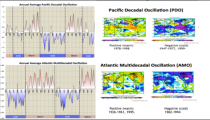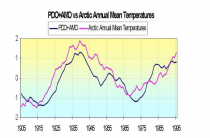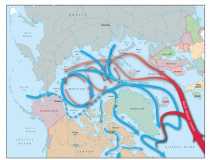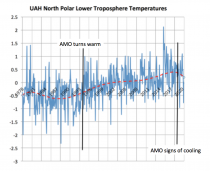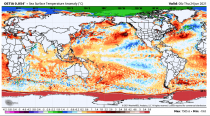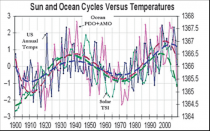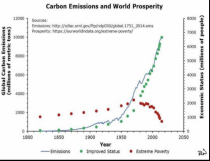Joseph D’Aleo CCM
Reports the last few decades about the diminished arctic ice has restarted talk about the possibility it opens up the arctic for Russia a shipping passage through its northern waters that could put it at the center of a new global trade shipping route. Nothing is new for those that care enough to look and know enough about this matter.
The Northwest Passage is a sea corridor connecting the Atlantic and Pacific Oceans through Canada’s Arctic Archipelago islands and along the northern-most coast of north America. Europeans searched for 300 years to find a viable sea trade-route to Asia. Columbus, European navigators began to seek a western route. Prominent in this search were such names as Jacques Cartier, Gaspar and Miguel Corte-Real, Sir Martin Frobisher, John Davis, Henry Hudson, and William Baffin. See the flurry of interest in Britain in the early 1800s here.
Dr. Gary Sharp (bio) suggested the following historical account “The Northwest Passage is a sea route between the Atlantic and Pacific Oceans. For more than three centuries, explorers had been trying to find the route before it was finally discovered in 1906 by Norwegian explorer Roald Amundsen (1872-1928.) When Amundsen successfully navigated the Northwest Passage, he found that it wound around between the mainland of northern Canada and the arctic islands of Canada. The journey aboard his small ship Gjoa took more than three years because he and his crew were forced to camp three winters. The first successful commercial voyage was made by the ice-breaking tanker SS Manhattan in 1969. This voyage followed the discovery of large oil deposits in Alaska, which influenced the opening of a shorter route to the east coast of the United States.”
How viable is a reliable northern route that opens each year? Some believe climate change induced by CO2 will deliver. But can one explain the ice decreasing and increasing based on the natural Atlantic and Pacific cycles of warm and cold.
In the latter 1990s, the US fisheries department at UWA found that the Pacific Ocean cycles of warming and cooling affected where the fisheries migrated. In the 1990s, researchers found a similar cycle in the Atlantic Basin.
Both cycles have a major effect on global temperatures including arctic temperatures as the water (warm or cold) is carried by the currents under the arctic ice.
When the Pacific warms, warm water enters the arctic from the Bering Sea west of Alaska enhancing early season ice melt and delaying freeze and ice thickness. See the warmer average annual temperatures in the warm PDO, which favors more El Ninos (left) and the cold when PDO turns cold, which favors cooler La Ninas (right).

Enlarged
When the Atlantic warms, the warm water is carried by the currents under the ice (which is floating) and the arctic warms (left). That warm water has a significant effect on ice cover over the summer season. When the Atlantic cools, the melting decreases and the ice is thicker and more persistent. Cooling results (right).
More ice means colder temperatures and see how the sum of the mean PDO and AMO tracks very well with arctic mean temperatures (from Polyokov, UAF).
This is supported by research. Francis et al. (GRL 2007) showed how the warming in the arctic and the melting ice was related to warm water (+3C) in the Barents Sea moving slowly into the Siberian arctic and melting the ice. She also noted the positive feedback of changed “=albedo” due to open water then further enhances the warming.
The International Arctic Research Center at the University of Alaska, Fairbanks showed how arctic temperatures have cycled with intrusions of Atlantic water - cold and warm.
Before the NSIDC was silenced in their objectivity, they wrote after 2007, “One prominent researcher, Igor Polyakov at the University of Fairbanks, Alaska, points out that pulses of unusually warm water have been entering the Arctic Ocean from the Atlantic, which several years later are seen in the ocean north of Siberia. These pulses of water are helping to heat the upper Arctic Ocean, contributing to summer ice melt and helping to reduce winter ice growth.”
Another scientist, Koji Shimada of the Japan Agency for Marine-Earth Science and Technology, reports evidence of changes in ocean circulation in the Pacific side of the Arctic Ocean. Through a complex interaction with declining sea ice, warm water entering the Arctic Ocean through Bering Strait in summer is being shunted from the Alaskan coast into the Arctic Ocean, where it fosters further ice loss.
Many questions still remain to be answered, but these changes in ocean circulation may be important keys for understanding the observed loss of Arctic sea ice.”
Note the North Polar atmosphere has warmed since the AMO warmed in 1995. Note also that it is now showing signs of cooling, which the late great hurricane guru Dr. Bill Gray thought might happen starting around 2020 (Atlantic temperatures affect the hurricane season too which got his attention). Note the decline after 2016 with some months 3C colder than the 2016 Super Nino peak.
Dr. Willie Soon showed how the arctic temperature fit better with the solar than CO2.
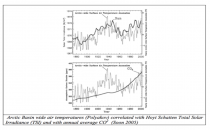
Enlarged
Solar appears to be the driver behind global temperatures and ocean cycles.
All CO2 does is increase world prosperity through plant fertilization - even the Sahara desert areal extent has declined 8%. The cold will return and the ice too. Humanity will be left poorer and greatly handicapped to deal with it.



